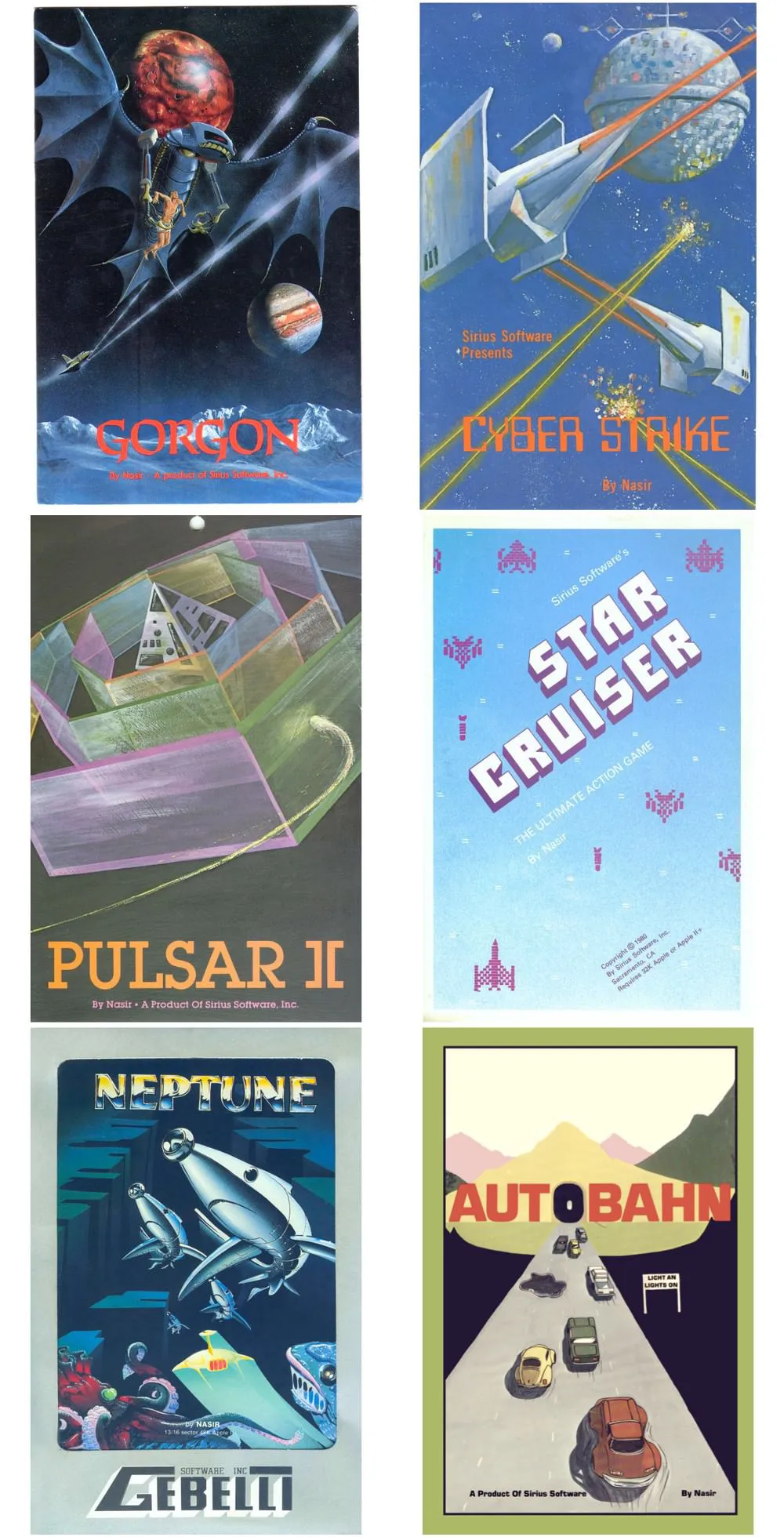
Box Art Brut: The no-rules designs of early computer games
I’m fascinated by the fertile period of game development between ’79 and ’83, when home computers and consoles first went mainstream. Hundreds of game companies sprung up overnight, some little more than a P.O. box operated by a teenager.
No conventions existed yet and everything was up for grabs. Were games sold in computer hobbyist stores? Book stores? Toy stores? Through mail-order? Was a videogame more like a book or more like a movie? Should the aesthetic be futuristic or familiar?
Industry marketing conventions had yet to be established, but one principle in videogame box art dominated: never show the actual game.
You may be familiar with Atari’s signature house style for console games, but there was a lively home-brew trade in early computer games which were far easier for enthusiasts to produce. Literally anyone could sell games by throwing a booklet and a cassette tape or floppy into a plastic baggie and taking out a local print ad.
Here are some of my favorite lesser-known works of early visual design:
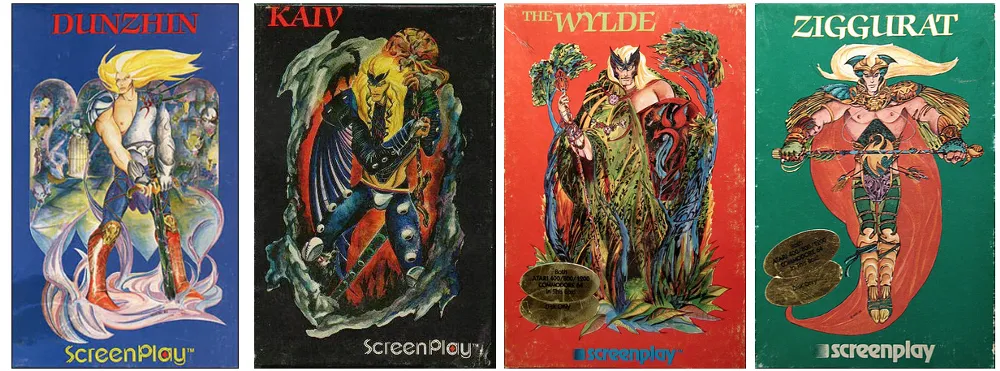
Warrior of Ras (1982)
I didn’t remember this roguelike series by Randall Masteller, but thanks to these covers I will never forget it. I appreciate the consistency of the artistic vision and luxurious hair volume, and the level of detail in the scenery in Dunzhin. Let us not overlook the fine codpiece work in Kaiv.
Like a lot of early covers, there’s literally no information presented about what this game is or why you might want to play it (or even definitive evidence that it’s a game at all). Necessary details like what system it was for or how much memory was required were usually added on as stickers since the same art would be reused for multiple platforms. This is all before Photoshop, CorelDraw, or even MacPaint, so artwork for these games was painted the old-fashioned way, and those brush strokes and imperfections are clearly visible.
Today you can play Ziggurat in a browser.
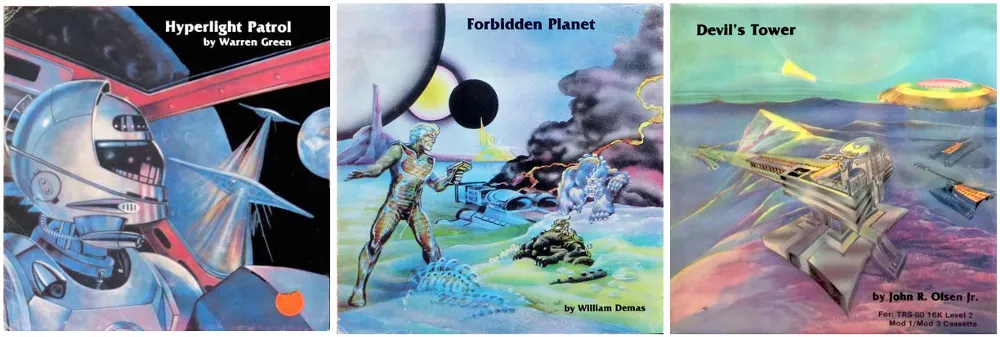
Hyperlight Patrol (1980) · Forbidden Planet (1981) · Devil’s Tower (1982)
These three TRS-80 games have nothing in common other than being by the same publisher and, presumably, sharing an artist: Hyperlight Patrol is a space war simulator; Devil’s Tower is a shooter; and Forbidden Planet is a text adventure with low-fidelity speech samples that shout at you when you make typos.
I appreciate that actual time was taken with the art, though. It’s full-bleed, minimally annotated, and the aspect ratio is more 12" gatefold than game box. The visual style is an appealing middle ground between OMNI magazine cover and prog rock concept album. The original painting for Devil’s Tower (sadly, still uncredited) is up for auction.
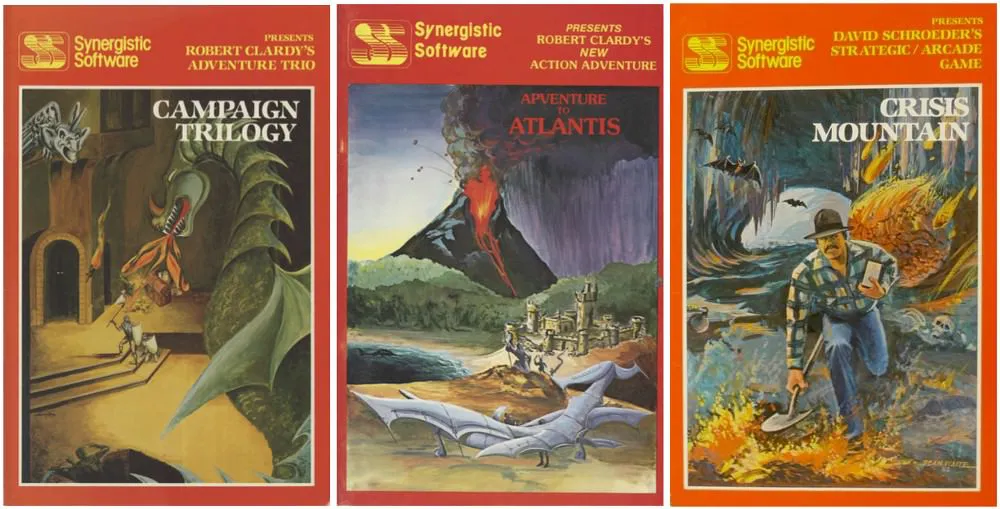
Campaign Trilogy (1980) · Apventure to Atlantis (1982) · Crisis Mountain (1982)
Synergistic Software mostly self-published their own (forgettable) adventure games, though Crisis Mountain was well-regarded and widely ported. I love the way these covers are indistinguishable from 80s young-adult adventure stories.
Synergistic took their pseudo-book aesthetic pretty far, laying out their entire game manuals as if they were novels :

And why not? These were stories (or aspired to be), and nobody had decided yet what videogame art looked like. This was a missed opportunity to stake out games as a literate form, even if that form is a bit Hardy Boys Meets the Dungeon Master.
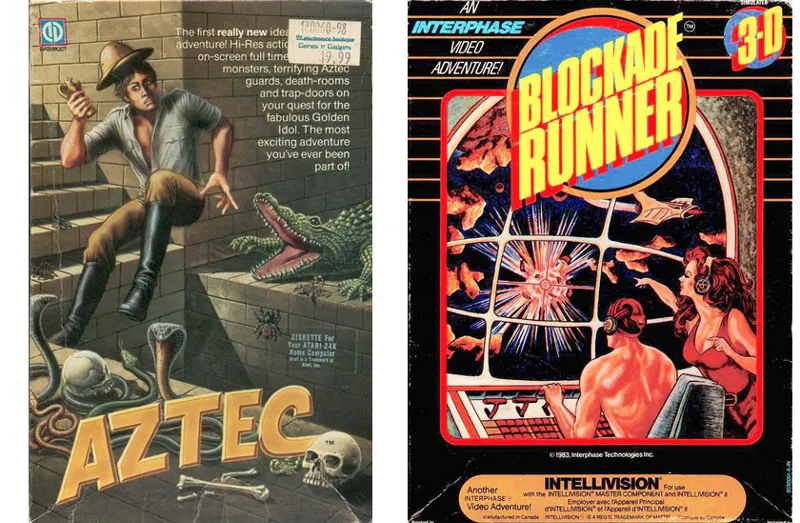
Aztec (1982) · Blockade Runner (1983)
I wish I could’ve found more pulp-influenced covers that weren’t winking parodies . Blockade Runner’s art is just so great—there is no context for the crew’s informal attire, and I love how Lt. Troi is helpfully pointing out the giant explosion in case Captain Beefcake hadn’t noticed it. The game was successful enough to be ported to multiple platforms but in none of them does the dude ever put on a shirt.
Aztec’s hero is also showing a fair amount of skin, and I know he’s supposed to be running along a ledge but it looks more like he’s sitting on an invisible platform. Also there aren’t any cobras in Central America. What I’m saying here is they could’ve tried harder.
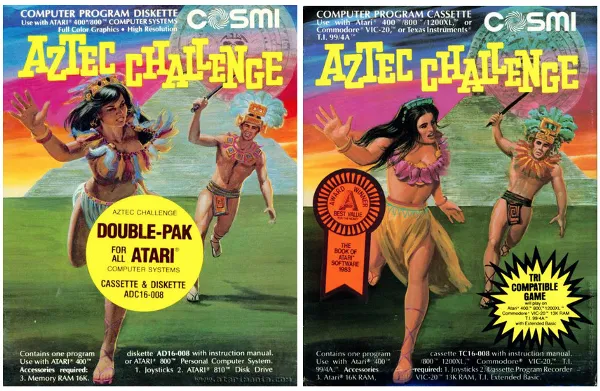
Dishonorable mention for an unrelated pair of games with the same racist art both called Aztec Challenge (1982/3). The second version by Paul Norman is nevertheless considered a game design classic.
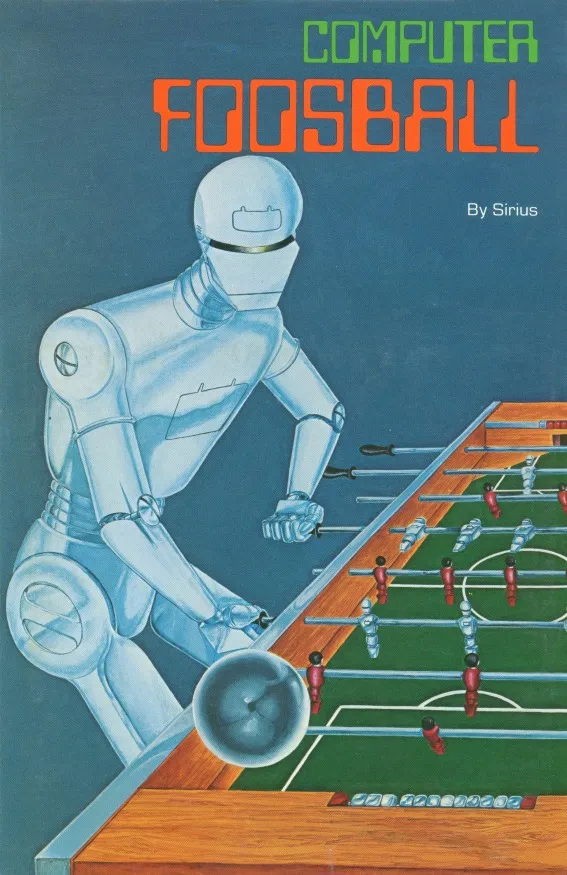
Computer Foosball (1983)
I don’t even know where to start about how much I love this. The art is credited to Janet Lopez. The game was written by Apple employee Keithen Hayenga and came free with the Sirius Joyport, an external game adaptor which was less titillating than it sounds.
I love that the brush strokes are clearly visible in the background, and that one of the foosball teams is composed of little matching robots. I guess the spheroid thing in the middle is supposed to be the foosball flying at us, but the composition is weirdly static.
The Westminster typeface was already a cliche in 1983 and was rarely used in actual game packaging. The flat design of the background and the minimalist byline are also striking. The net result is that this cover art looks less like an actual artifact and more like a 21st century designer’s idea of 1983.
Sirius and Gebelli (1980-1983)
Sirius Software published dozens of games in the period between 1980 and 1983, many coded by Nasir Gebelli, who left to form his own company when the Sirius founders refused to give him equity. Steven Levy covered Sirius in his seminal book on the early computer age, Hackers . If this post were about videogame titles rather than covers, Sirius would get prime placement for The Earth Dies Screaming and the Egyptian-themed Copts and Robbers .
Both Gebelli Software and Sirius published their share of turds, in terms of both games and cover art, but the best of them are the best this period has to offer. The art for Neptune is credited to Frank Carson; Gorgon to Michael Carroll; Cyber Strike to Terri Kenney; and Autobahn to Janet Lopez. The remainder have no specific credit for the cover art. They are all great.
